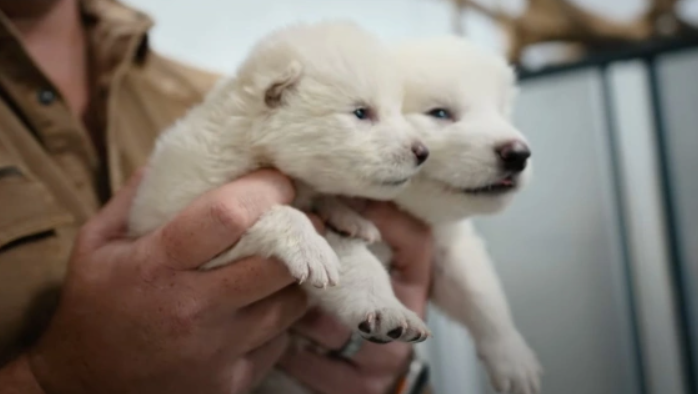Dallas-based biotechnology and genetic engineering company Colossal Biosciences has announced the “creation” of three dire wolves. The species went extinct 12,000 years ago and was popularized by the television series Game of Thrones, Bloomberg reports.
The company reported the three individuals weighing about 36 kg. They are two men, Romulus and Remus (named after the legendary founders of ancient Rome — RBC Life ), and a woman, Khaleesi (named after Emilia Clarke’s character from Game of Thrones).
The company says the cubs are in a fenced reserve in the United States (the exact geographic location is not disclosed). They are fed beef, venison, horse and specially prepared kibble. The males are about 20-25% larger than a normal wolf their age. When they reach maturity, the “reborn” animals will weigh 63.5 kg.
The DNA of the dire wolf was isolated from samples found in American museums: a skull that is about 72,000 years old and a tooth from an animal that died 13,000 years ago. Scientists then made about 20 corresponding edits to the genome of the common wolf, the edits aimed at creating such dire wolf features as greater mass, bigger muscles and white fur. The edited cells were placed in the eggs of domestic dogs, which were then implanted into surrogate mothers – hybrids of large dogs.
The company also claims to have cloned two litters of red wolves, an endangered species. Biotechnologists used a new, non-invasive method of cloning blood, and the resulting puppies were named Hope, Blaze, Cinder and Ash.
Earlier, Colossal Biosciences announced the success of a test before the “resurrection” of a mammoth (the species went extinct about 4,000 years ago). The organization bred a new species of mice, whose representatives are endowed with the features of the giant extinct animals.
“To create a woolly mouse, we focused on identifying genes associated with key mammoth traits: fur and fat metabolism. <…> A small step towards creating mammoths,” the biotechnologists said. Scientists believe that such a phenotype is important for the survival of mammoths in cold climates. An Asian elephant would simply freeze in the cold without fur.
